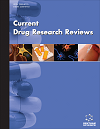
Full text loading...
Chalcone derivatives continue to captivate medicinal chemists due to their modest chemistry, facile synthetic method, and promising biological activities. They have become well-known in the therapeutic and pharmaceutical industries due to their diverse biological actions. These complexes offer different features and applications in a human biological system due to the flexibility of the reactions, including antimicrobial, antineoplastic, antimalarial, and other uses. As a result, chalcones have sparked much attention in malignancy research. Cancer is characterized by uncontrollably growing and spreading abnormal cells and aberrant cell behavior. These masses destroy surrounding normal tissue and can attack vital organs, leading to widespread disease. Cancer is frequently used as a warning sign for impending patient death. In the age of pharmaceutical chemistry, it is unavoidably a cause for concern and a growing weight on the populace. The pathophysiology of all malignancies is due to faulty genes that regulate the development, division, and death of cells. Various genetic and environmental variables combine to cause mutations in genes encoding essential cell-regulatory proteins, leading to the numerous alterations that characterize the evolution of cancers. Rather than directly targeting DNA synthesis, the new generation of anticancer medications target signals that promote or control the cell cycle, growth factors and their receptors, signal transduction pathways, and pathways impacting DNA repair and death. Drug hunters are focusing their attention on chalcone derivatives with varying chemical structures since they are essential in the search for anticancer drugs. Chalcone's anticancer action may be attributed to molecular changes such as drug efflux protein activities, activation of apoptosis, DNA and mitochondrial damage, inhibition of angiogenesis, tubulin inhibition, and kinase inhibition. Chalcones are used to diagnose cancer as well. The development of chalcone congeners as a prodrug or prime chemical to combat cancer necessitates a thorough investigation. This review gives an update on the different pharmacological activities of natural and synthesized chalcones in recent years. Furthermore, the structure-activity connections and processes are extensively documented, providing essential design and synthesis assistance in the future.

Article metrics loading...

Full text loading...
References


Data & Media loading...

